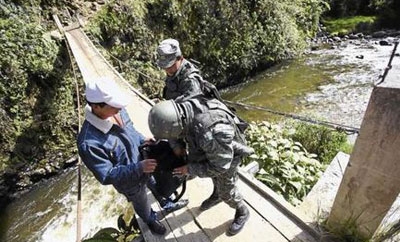Ecuadorean authorities confiscated $3 million in smuggled goods during the first six months of 2013 at a new checkpoint on the border with Colombia, yet unofficial border crossings continue to fuel the contraband trade in the region.
In 270 separate actions, authorities from the National Customs Service of Ecuador working at new installations in the Carchi department seized goods including clothes, food, cigarettes, cell phones and medicine that did not have the proper documentation, reported El Comercio.
At other checkpoints, seizures have also been made of large contraband shipments of rice, gasoline, electronics, liquor and cement and of items including ammunition, explosives and drugs.
Ecuador’s armed forces also reported that over 25 unofficial border crossings exist in the 176 kilometers of shared border between Colombia’s Nariño department and Carchi, mainly along the Carchi and Bobo Rivers. Though the majority of these are locally constructed basic wooden bridges held up by steel cables, former Army Commander Mauricio Silva reported that up to 15 cylinders of gasoline can be seized at these illegal crossings in a week.
News channel Ecuavisa separately reported in late May that at least 64 such crossings exist across the entire length of the shared border.
InSight Crime Analysis
The seizures at the new border checkpoint provide one window into the host of illegal activities taking place along the Ecuador-Colombia border, while the sheer number of illegal crossings makes it clear that authorities are catching but a small portion of the goods passing through.
Though many illegal border crossings are informal and locally constructed, they not only provide an easy route for contraband smugglers but also are used by the guerrillas of the Revolutionary Armed Forces of Colombia (FARC) to resupply from local towns and take advantage of the porous border to bring trafficked weapons into Colombia.
The illicit border crossings may also be one of the factors fuelling the migration of drug crops. While still on a small scale compared to neighboring Colombian regions, coca cultivation has been creeping across the border into Ecuador — an activity that is also likely linked to the FARC rebels.

